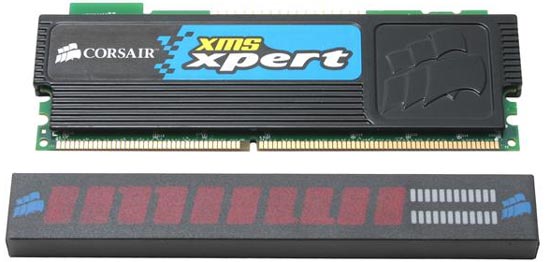Corsair XMS XPERT 3200XL Memory Review
Overcocking & Conclusion
Overclocking
As usual, we all want to get a little bit faster, drop that SuperPi time by a half a second, and hold a speed record, and to do this we must overclock. Overclocking is nothing new to enthusiasts, and is even becoming mainstream, and therefore is an important part of a review. With Samsung TCCD chips we should be able to get a fairly decent overclock, and for the purpose of the review we are going for stability rather then a quick screenshot.
Using a memory divider of 1:1 with the HTT(FSB) and a CPU multiplier of 11 we could reach 230mhz with minimal voltage increases. The CPU was given a 10% increase in voltage (to 1.64), and the memory was upped to 2.9 volts. Timings remained at 2-2-2-5.
Wanting more we decided to drop our CPU multiplier, as we suspected that the Clawhammer and its 1MB Cache were holding back the overclock. By dropping our CPU multiplier to 8.5 and loosening the memory timings to CL2-3-3-6 we were able to hit a stable 270 MHz HTT speed. This translates into approximately DDR540 speeds, very close to DDR 550, which generally has timings with a CL of 2.5 or 3. Temperatures at this level were very low, approximately 25 degrees Centigrade on the memory. With this overclock we had the ability to benchmark, and using Sandra we recorded very good increases in bandwidth. Without an overclock we recorded an unbuffered bandwidth of 1842 MB/s and a buffered bandwidth of 3108 MB/s. We recorded an increase of 291 MB/s unbuffered (16% increase) and 765 MB/s buffered (25% increase). These are impressive numbers and show how beneficial overclocking can be.

Conclusions:
Patrick Harris? Thoughts:
With the introduction of the Xpert modules Corsair has yet again captured the wallets of enthusiasts everywhere. By utilizing their X-treme Low Latency memory chips with the addition of the Xpert module they have melded performance and looks together. Although they are rated at only 400 MHz and DDR1, they still are very much alive. We also expect Corsair to have a DDR2 version out within a decent amount of time as well due to the demand of DDR2 for Intel systems. Being DDR400 they also are plug and play, unlike many faster modules which require overclocking and tweaking to reach their rated speeds. You may need to manually adjust timings to achieve the default latency due to Corsair programming the chips to ensure compatibility with all systems. The wonderful overclockability of these modules while maintaining decent timings also makes the Xpert series a great choice.
Corsair has shipped the single modules which can be found for around $130 USD while the dual channel 1GB kits sell from $255-300 USD
Legit Bottom Line:
If you want performance as well as a unique look, then look no further then the new X-treme Low Latency Corsair Xpert series of memory.

Comments are closed.